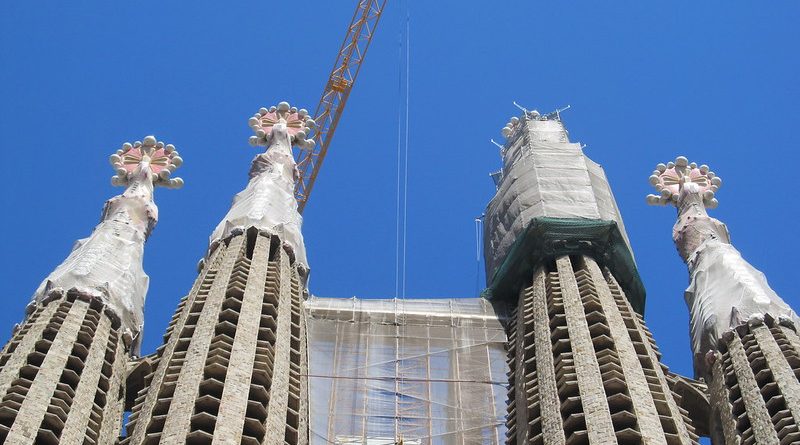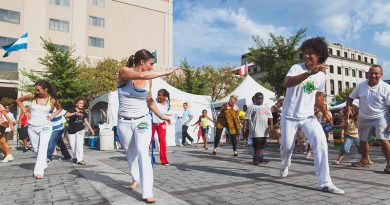Barcelona’s Modernist Heritage
Architecture has had a very special importance among all the arts in Catalonia. It’s often been the most appropriate medium through which to express national identity. Periods when architecture flourished have paralleled eras of increased Catalan freedom of action and self expression, greater wealth.
Ideas, attitudes and trends are taken in from abroad, but are assimilated into this strong local culture. Catalan builders have always shown interest in decorating surfaces and a concern with texture and the use of fine materials and finishes. This is combined with a simplicity of line and a sense of sobriety often seen as distinguishing Catalan character from that of the rest of Spain. Other traditional elements are references to the traditional architecture of rural Catalonia and to the powerful constructions of Catalan Romanesque and Gothic.
The sculptural forms of Barcelona’s modernista architects, most famously Gaudi, define the city’s exuberant architectural heritage.
Modernism, the Catalan offshoot of Art Nouveau, was the expression of a renewed upsurge in Catalan nationalism in the 1870s. The early nineteenth century economic recovery in Catalunya had provided the initial impetus and the ensuing cultural renaissance in the region led to the fresh stirrings of a new Catalan awareness and identity after the dark years of Bourbon rule.
Catalan Modernista creativity was at its peak for about 20 years, from 1888 to 1908, during which time an enormous amount of work was produced. The Eixample district highlights the style’s foremost display case, with the greatest concentration of art nouveau in Europe.
But Modernista buildings and details can be found in many other locations in Barcelona. The grander or more outrageous Modernista buildings are easy to find. However one of the most striking things about the style is the way it appears at so many points in the city’s fabric, often in unexpected places.
By the 1900s Modernisque had become too extreme for the Barcelona middle class, and the later buildings of Gaudi, for example, were met with derision.
Everybody talks about Gaudi when they talk about Barcelona, but the truth is that he really is quite unique.
Gaudi’s La Pedera is a spectacular building. It has an atmosphere, a character, a world of its own. One of the surprising things is that this is not a monument, but a residential building built for the bourgeoisie to live in.
Gaudi’s Parque Guell is a beauty. It has great views over the city. The park itself has a series of locations which are intriguing
La Sagrada Familia is the place where Gaudi took his genius to the highest point
Controversy? – he conceived it to be build in stone, but now 150 years later some towers are being built in concrete and then clad in stone. Should it have been left unfinished? Many think so
Other Catalan Modernist architects include :
Lluis Domenech I Montaner (1850-1923)
Modernista architecture was given a decisive boost by the buildings commissioned for the Universal Exhibition of 1888, most of which were by Domenech. Most of them no longer exist, notably the ‘International Hotel’ which was built in under 100 days and demolished even more rapidly once the exhibition closed, but one that remains is the ‘Castle of the Three Dragons’ designed to be the exhibition restaurant and now the Museu de zoologia.
It already demonstrated many key features of Modernist style: the use of structural ironwork allowed greater freedom in the creation of openings, arches and windows and plain brick, instead of stucco previously applied to most buildings in Barcelona, was useed in an exuberantly decorative manner.
Domenech was one of the first Modernist architects to develop the idea of the ‘total work’, working closely with craftsmen and designers on every aspect of a building.
Domenech’s Builidings: These the Grand Hotel on the Passeig de Colom,the café-restaurant of the Parc de la Ciudadella, the ‘Castle of the three dragons’ in the Ciutadella, designed to be the exhibition restarurant and now the Museu de Zoologia. His greatest creations are the Hospital de Sant Pau, built as small ‘pavilions’ within a garden to avoid the usual effect of a monolithic hospital and the Palau de la Musica Catalana, an extraordinary display of outrageous decoration.
– Josep Puig I Cadafalch (1867-1957)
After Domenech and Gaudi, the third in the trio of leading Modernist architects was Josep Puig I Cadafalch, who showed a strong neo-gothic influence in such buildings as his Casa de les Punxes (house of spikes officially the Casa Terrades) which also combines with many traditional Catalan touches.




